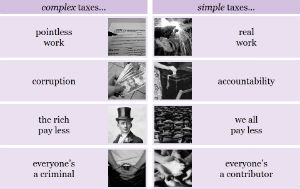Top Ten Cities Through History

Notes
This animation of the most populous ten cities in the world reveals some fascinating broad sweeps of history
If you go back 4000 years, all the action is in the Middle East. Since then, virtually all the biggest cities in the world have been concentrated in a narrow swathe from the Mediterranean, through the Middle East and northern India, across China and into Japan. Only in the last couple of hundred years have northern European cities such as London and Paris, and American cities such as New York and Chicago, edged into the top ten.
It's also clear that most cities don't stay at the top for long. Especially these days. Rome, capital of the greatest empire of the ancient world, lasted in the list for rather less than 1000 years; London, however, capital of perhaps the most extensive empire the world has ever known, stayed on the list for less than 400 years. Lesser cities come and go in what seems the blink of an eye.
Lists of the most populous ten cities in the world are perhaps less meaningful now than they used to be. In ancient times, no city was viable if it was not surrounded by fertile farmland; in modern times, it's not clear where once city ends and the next begins. Moreover, population is no longer such a good proxy for power or wealth. Manila may be a city of 20 million people, but it's neither as wealthy as Paris nor as powerful as Washington.
Still, don't underestimate the significance of the New York's being the only city in the USA that appears in the latest list of top ten cities. North America and Europe remain richer than South America, Asia and Africa, but look at the map for 2008, and you have to wonder how much longer this will last.
Subscribe now and I’ll let you know whenever I create a new visualization
It’ll only be every couple of months or so, I won’t let anyone else have your email address, and you can unsubscribe at any time
Thanks for subscribing!
Check your inbox for an email to confirm your subscription
Oh no, something went wrong, and I was unable to subscribe you!
Please refresh your browser and try again
Sources
Four Thousand Years of Urban Growth – An Historical Census by Tertius Chandler
Mongabay – World's Largest Cities – Ranked by City Population
Wikipedia – 137 articles on 137 cities – latitudes and longitudes
Date
First published 5 June 2011












Comments
Click here to leave a comment
Thanks for your comment!
I’ll check it and put it live as soon as I can
Oh no, something went wrong, and I was unable to post your comment!
Please refresh your browser and try again
Didi ⋅ 19 December 2011
This makes a lot of sense if you follow the reasoning in "Guns, Germs and Steel." Innovations can move most easily along the same latitude, so a string of cities around the globe works fine.
King of Mexico ⋅ 22 April 2013
when you comment on "New York's being the only city in the West that appears in the latest list of top ten cities" Why don't you count Sao Paulo and Mexico City?
How these two European speaking, European populated, Western Hemisphere cities are any less "Western" then New York is beyond me.
I've enjoyed the graphics on your site but have been bothered by your use of "western." It seems you are using the word as a stand in for a number of constructs about power and race, and by simplifying to the term "western" you obscure the complexity of history to fit into an narrowly defined, black and white, "East-West" world view that obscures the world's intricacies
Mark Jeffery ⋅ 22 April 2013
I think you're right, King of Mexico, we need language that reflects the complexity of the world. So I've removed the term "The West" from this page and every other page of things made thinkable. Thanks for prompting this rethink.
Michael E,. Smith ⋅ 31 July 2014
This study relies on terrible scholarly sources. Chandler's list of cities is full of errors, being based on an uncritical use of secondary sources. And Wikipedia as a scholarly source is a good example of "garbage-in lead to garbage-out." But the sad fact is that an accurate and authoritative list of the largest cities through history does not exist, and we archaeologists and historians have to take responsibility for this.
Mark Jeffery ⋅ 31 July 2014
Thanks, Michael. Actually, I didn't rely on Wikipedia for my data, I painstakingly went through a copy of Chandler's work at the library. And in this instance, I'd like to defend the contributors to Wikipedia, who are very aware of the shortcomings of Chandler's census. You're right, an accurate and authoritative list does not exist, but I still think it's fascinating to study the lists that do exist, however imperfect.
chris chase-dunn ⋅ 8 October 2014
thanks for doing this.
an improvement over chandler is
Modelski, George 2003 World Cities: â 3000 to 2000. Washington, DC: Faros 2000